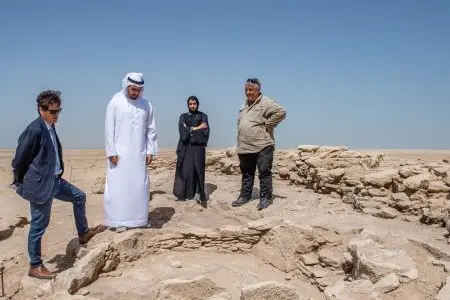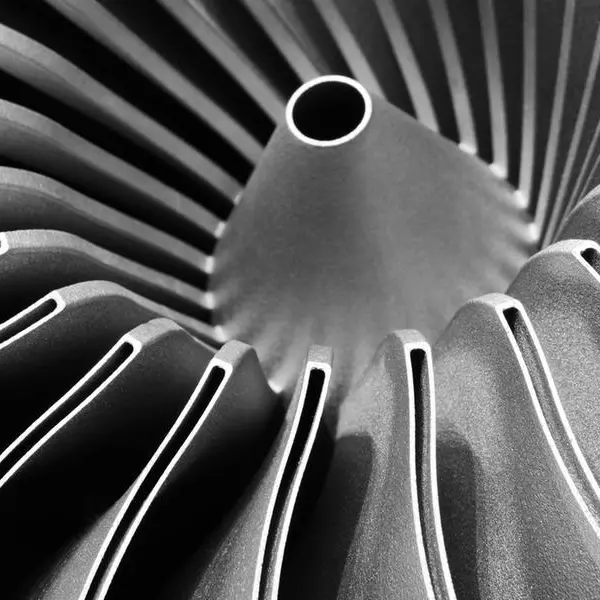PHOTO
Abu Dhabi: The latest archaeological excavations on Marawah Island, carried out by specialist teams from the Department of Culture and Tourism – Abu Dhabi (DCT Abu Dhabi), have shed new light on Abu Dhabi’s earliest known settlement, which dates back 8,000 years.
The most recent excavations, which took place over a period of five weeks in February and March, have uncovered stunning new evidence on the architecture, art and technology of Abu Dhabi’s Neolithic inhabitants.
Marawah lies around 100km to the west of the city of Abu Dhabi, and approximately 25km northwest of the port of Mirfa. The dig site is situated on top of a rocky limestone plateau located just to the west of Ghubba village in the south-western part of the island. First discovered in 1992 during an archaeological survey of the island, the site consists of at least seven mounds that appear to be the remains of collapsed Neolithic stone structures.
Previous archaeological excavations focused on one of the smaller mounds at the site, and uncovered a well-built, three-room stone structure and a number of significant finds. These included an imported ceramic vase - which the public can now see on display at Louvre Abu Dhabi - as well as flint arrowheads and pearl oyster shell buttons, which are currently on display at Qasr Al Hosn. Other finds retrieved included numerous plaster vessel fragments, shell and stone beads, marine shells, fish bones, mammalian bones from gazelles and dugongs, and cetacean bones from dolphins.
Expanded excavations have taken place at the site since 2017 and these have concentrated on the largest mound, revealing the presence of numerous stone buildings. The recently completed excavation season successfully uncovered the full extent of this mound with an exceptional range of artefacts found around this unique building. These included a large number of stone arrowheads, as well as decorated and undecorated plaster vessel fragments. The plaster vessel fragments are richly painted and represent the earliest known decorative art yet discovered in the UAE.
Radiocarbon dating of charcoal fragments from different layers in the site demonstrates that the site was occupied between about 8,000 years ago to about 6,500 years ago.
HE Mohamed Khalifa Al Mubarak, Chairman of DCT Abu Dhabi, visited Marawah Island on Monday 18 March to view the progress being made by archaeologists working on the excavation.
“The continuing archeological excavations we are carrying out on Marawah Island continue to uncover fascinating and revealing discoveries,” said HE Mubarak. “As we at DCT Abu Dhabi work to preserve, promote and protect the heritage sites that embody this history of our region so that they can inform future generations, Marawah Island continues to present stunning evidence of our past which reveals more and more of our storied origins.”
-Ends-
© Press Release 2019Disclaimer: The contents of this press release was provided from an external third party provider. This website is not responsible for, and does not control, such external content. This content is provided on an “as is” and “as available” basis and has not been edited in any way. Neither this website nor our affiliates guarantee the accuracy of or endorse the views or opinions expressed in this press release.
The press release is provided for informational purposes only. The content does not provide tax, legal or investment advice or opinion regarding the suitability, value or profitability of any particular security, portfolio or investment strategy. Neither this website nor our affiliates shall be liable for any errors or inaccuracies in the content, or for any actions taken by you in reliance thereon. You expressly agree that your use of the information within this article is at your sole risk.
To the fullest extent permitted by applicable law, this website, its parent company, its subsidiaries, its affiliates and the respective shareholders, directors, officers, employees, agents, advertisers, content providers and licensors will not be liable (jointly or severally) to you for any direct, indirect, consequential, special, incidental, punitive or exemplary damages, including without limitation, lost profits, lost savings and lost revenues, whether in negligence, tort, contract or any other theory of liability, even if the parties have been advised of the possibility or could have foreseen any such damages.











